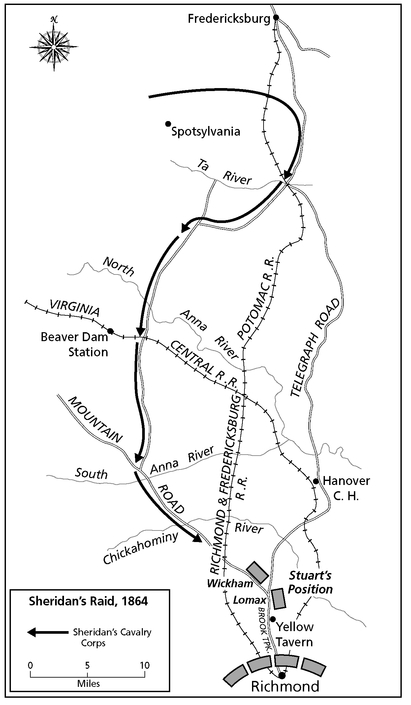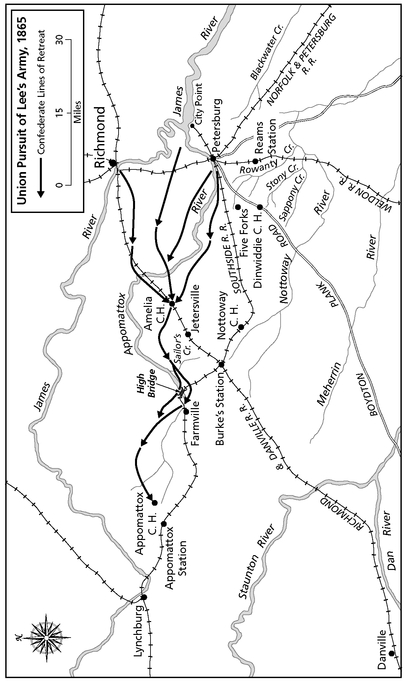Terrible Swift Sword
Read Terrible Swift Sword Online
Authors: Joseph Wheelan



Table of Contents
Â
Â
Â
Â
Major General Philip Sheridan.
National Archives
National Archives

In memory of the late
Â
EDWARD W. KNAPPMAN
(NOVEMBER 1943âMARCH 2011)
(NOVEMBER 1943âMARCH 2011)
Â
a first-rate literary agent, editor, and mentor
ACKNOWLEDGMENTS
The genesis of this book was a two-volume set of Philip Sheridan's
Personal Memoirs
that came to me after my father's death. For years, it sat neglected on the shelf while I pursued a career and wrote books about the early nineteenth century.
Personal Memoirs
that came to me after my father's death. For years, it sat neglected on the shelf while I pursued a career and wrote books about the early nineteenth century.
When I finally got around to reading the
Personal Memoirs
, I realized that Sheridan would make a fine subject for a book.
Personal Memoirs
, I realized that Sheridan would make a fine subject for a book.
As I delved more deeply into Sheridan's life and times, librarians and historians from Washington, D.C., to Tennessee, Virginia, and North Carolina aided me in tracking down the information that I needed to write this book.
The University of North Carolina's Davis Library and its Southern Historical and Rare Book collections offered a rich trove of Civil Warâera diaries, journals, and papers.
During my visits to the Library of Congress in Washington, the staff, as always, was courteous and eager to assist.
Wake County Public Librariesâparticularly the Interlibrary Loan staff and the West Regional Libraryâhelped me to obtain microfilms of Philip Sheridan's papers lent by the Library of Congress.
The staff historians at the Civil War battlefields where Sheridan became a household name were generous in sharing their valuable knowledge with me.
Jimmy Blankenship, the historian at the City Point Unit of the Petersburg National Battlefield, guided me through General Ulysses S. Grant's City Point headquarters, and answered my questions about Sheridan's and President Abraham Lincoln's visits in 1864 and 1865.
James Ogden, historian for the Chickamauga and Chattanooga National Military Park, clarified Sheridan's movements during the Battle of Chickamauga.
Finally, my wife Pat's unflagging support and interest were as essential to this project as to every historical journey that I have undertaken.






They want war too methodical, too measured; I would make it
brisk, bold, impetuous, perhaps sometimes even audacious.
brisk, bold, impetuous, perhaps sometimes even audacious.
âANTOINE HENRI JOMINI
PROLOGUE
OCTOBER 19, 1864âWINCHESTER, VIRGINIAâMajor General Philip Sheridan and his three-hundred-man escort rumbled through the streets of the oft-captured strategic crossroads city in the early morning. All around them, the Shenandoah Valley was ablaze with vivid autumnal yellows and reds under a serene, blue sky. It might have been a glorious day for picnickingâexcept for the disturbing sound of distant cannon fire.
1
1
After an absence of three days, Sheridan was returning to his Army of the Shenandoah. His 32,000 veterans were camped to the south among an accordionlike series of ridges along the north bank of Cedar Creek. On the creek's other bank, Massanutten Mountainâand, significantly, Three Top Mountain, with its Confederate signal stationâloomed over the Union encampment.
Sheridan had been in Washington to confer with War Secretary Edwin Stanton and Army Chief of Staff Henry Halleck about his army's next move. They liked his plan to send most of his men to General Ulysses S. Grant at Petersburg, leaving just a small force at the Valley's north end to check any Rebel advances.
Major fighting in the Valley seemed at an end. In September, Sheridan's army had defeated Lieutenant General Jubal Early's Army of the Valley at the Third Battle of Winchester and then, three days later, had driven the Rebels from Fisher's Hill. The Confederates had withdrawn seventy miles to the south, to Waynesboro.
Other books
A First Family of Tasajara by Harte, Bret
Web of Lies by Candice Owen
We Saw The Sea by John Winton
Warrior Betrayed: The Sons of the Zodiac 3 by Addison Fox
Taken in the Haunted House (Extreme Horror Erotica) (Horrorcore) by Winchester, Ruby
Do Less by Rachel Jonat
The Unwilling Warlord by Lawrence Watt-evans
The Smoking Mirror by David Bowles
Kill Fee by Barbara Paul
Vuelo final by Follett Ken
